
Thread Types and Standards
In this compact blog post, we're going to talk about the thread types and standards. Our customers ask our support team from time to time various questions on the subject: “Conversion of a thread and thread standard”, so we hope that this article will be useful for Internet surfers to provide a general understanding in the technical field.
In the first part we will look at the most common imperial and metric standards of the thread. The second part is devoted to the topic of “Conversion in general”. This article can help you to identify the most common connections for refrigeration and air conditioning.
Abbreviations and Standards (SAE, UNF, NPT...)
There are still many different connection systems, developed according to international and national standards and specific markets. This confuses people and brings some chaos to the standardization of the thread. The majority of systems use metric and imperial thread types. The metric thread is determined by the outer diameter and the thread pitch - the distance between two tips of the thread. The inch thread is determined by the outer diameter and the number of threads per inch.
The most common imperial thread types in the world are listed below:
- SAE (Society of Automotive Engineers - US standardization company similar to the VDA, but with the meaning of DIN) - American connection form (metallic sealing screw-in thread). cylindrical UNF thread with O-ring on the sealing collar (cone connections with 45 ° sealing surface UNF thread), widely used in refrigeration and air conditioning systems
- UNF (Unified-National-Thread-Fine) - Fine thread according to US standards with a flank angle of 60 ° (same as the * metric ISO thread) defined by the outer diameter of a screw in inches and the thread pitch in revolutions per inch, used for the most common screws and nuts, also called ISO threads in inch dimensions;
- NPT (National Pipe Taper) - American thread form, conical thread in which the sealing takes place via the thread flanks.
*Metric ISO pipe thread (M thread) similar to Whitworth pipe thread, tapered, cylindrical external thread or cylindrical internal thread, is also known as inch thread.
Below is an example of the thread M14X1,5:
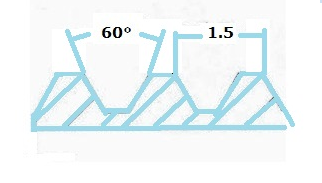
Some thread types can be converted, e.g. SAE to UNF and vice versa. Unfortunately, you cannot convert NPT thread type. The thread comparison table shows the equivalents for a better understanding:
Conversion of SAE to UNF standard
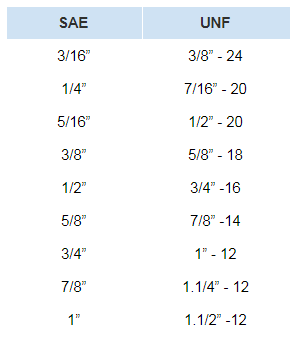
It is difficult to recognize the threads at first glance, as they often look the same. In order to correctly identify threads, you have to measure them and compare them with the following pictures. Please use a vernier caliper to determine the thread diameter.
Image 1
Image 2
NPT thread - National Pipe Taper (formerly "Briggs thread") are not only common on the market with tapered external but also with tapered internal threads. The sealing is carried out on the outer thread flanks, which are wrapped with a Teflon tape before installation.
NPTF = National Pipe Taper Fuel are taper threads and are used without sealing tape. The sealing is carried out via the pointed thread flanks, which deform during assembly and thus provide an excellent seal when first installed. The NPT / NPTF National Pipe Taper tapered fine thread has a thread flank angle of 60 ° and a taper angle of 1 ° 47 ".
Conversion of inches to mm
Find products quickly!
This table will help you to find the right nuts, nipples and adapters in our shop.
Gas cylinder valve thread according to DIN 477
In addition to the type of thread, the refrigerant is also a factor that must be taken into account when choosing an adapter or cylinder valve, for example. Since different refrigerants have different working pressures, serious functional problems can arise if the wrong adapter is used.
The table below:

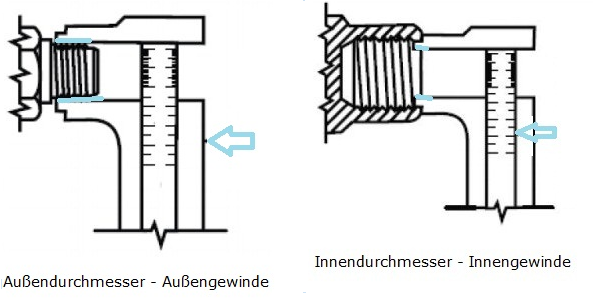
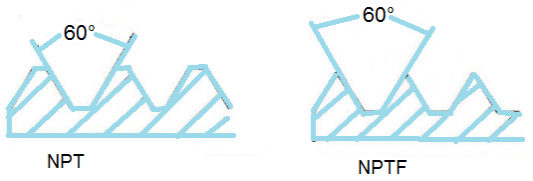
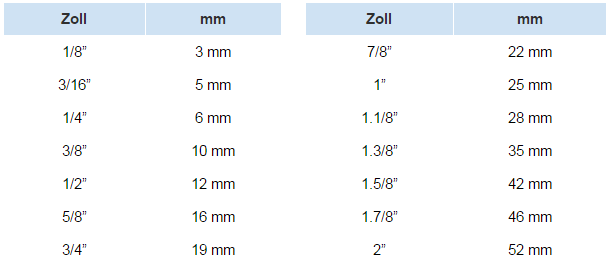
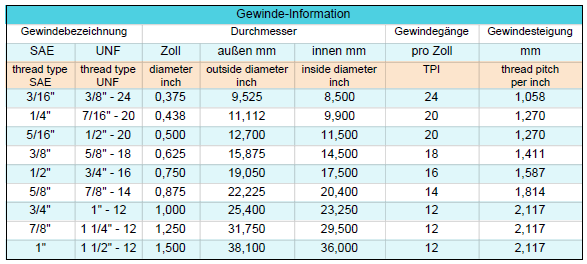

Comments (3)
M.Doering
July 18, 2023 16:51Guten Tag Ich habe eine Flasche mit Kühlmittel für unsere Klimaanlage. Gekauft habe ich die Flasche mit 1/4 Zoll Anschluss rechtgewinde. Wenn ich messe hat das Gewinde einen Außendurchmesser von 10,8 mm Die Verschlusskappe innendurchmesser von 10,2 mm Was ist das für ein Gewinde?… Ich würde einen Adapter von der Flasche zum Schlauch 6 mm benötigen. Danke für Ihre Rückmeldung. Gruß
Ferhat Dag
August 23, 2023 17:41Hallo Leute, ich habe einen Nachfüll Kartusche mit einen durchmesser von 10,8mm und sollte das immer wieder auffüllen können, welche anschluß benötige ich dazu. Die Gewinde Gänge sind sehr fein und ich denke metrisch Gewinde. Es soll entweder ein Durchflussregelventil oder kältemittelventil sein, für die befüllung von Leeren kartuschen. vielen Dank im voraus für die antwort. Gruß .
D. S.
November 3, 2023 22:09Guten Tag, ich möchte eine Vakuumpumpe mit einem ihrer zwei verfügbaren Anschlüsse (SAE 1/4" bzw. SAE 3/8", jeweils männlich) verbinden mit einer Schnellkupplung NW7.2 (weiblich). Existieren entsprechende Adapter (SAE 1/4" o. 3/8" weiblich auf NW7.2 männlich) überhaupt? Irgendwie werde ich nicht fündig. Alternativ würde mir evtl. auch ein Adapter SAE 1/4" o. 3/8" weiblich auf R 1/4" BSP männlich helfen. Vielen Dank für die Rückmeldung, freundliche Grüße